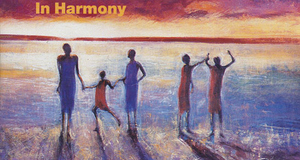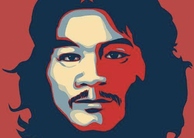Propaganda, Patriotism, and Perseverance: How Music Became an Instrument for the US War Effort During the Second World War
By
2021, Vol. 13 No. 11 | pg. 1/1
IN THIS ARTICLE
KEYWORDS
AbstractThis article analyzes the role of musical works in the United States during World War II. It chronologically examines how the social and therapeutic functions of music evolved due to the developments of the war. This article uses the lyrics of wartime songs as a window through which to examine changes in public opinion during the course of the war. It thus demonstrates how music influences and is influenced by exogenous changes in society, notably during times of crisis. To this end, a selection of American songs from different periods of the Second World War are analysed and their lyrics are contextualised. IntroductionThe Second World War is one of the most tragic and controversial pages of world history. Throughout the post-war years, including the modern stage of society, interest and attention to this significant event has never waned. In the USA, wartime songs, such as ‘God Bless America’ originally written by Irving Berlin (1939) and performed by Kate Smith, have become classics and serve as emblems of national pride today. Indeed, music and history share a reciprocal relationship: on the one hand, music is inspired by exogenous events. On the other hand, music is a vector for change on an individual, institutional and national level. This paper specifically explores the mutual relationship between music and public opinion during WWII in the USA. The emotive power of music for the nation first manifested itself during the 1930s. President Franklin D. Roosevelt recognized that music and entertainment constituted sacred lifelines allowing Americans to escape from the doom and gloom of the Great Depression. The Roosevelt Administration picked up jobless musicians, writers and artists from the streets and capitalized on their skills. The New Deal innovated a cultural institutional framework and provided relief for artists through the Works Progress Administration (Dickstein, 2009). The energetic rhythm of jazz and swing music echoed across the radio; replacing disappointment with hope and fear with defiance (ibid: 92). Morris Dickstein emphasizes the salience of music for kick-starting America’s socioeconomic recovery: ‘The arts packed a charge of physical energy that translated into the kind of psychological energy that stimulated depression audiences and consumers’ (ibid.). Thanks to the New Deal, the US disposed of a musical institutional framework that could be remobilized during hard times (Fauser, 2013). Songs would soon adopt a new protagonism following the outbreak of WWII.Following the economic and social strains of WWI and the Great Depression, many Americans were determined for their country to abstain from intervening in conflicts on European soil. When the UK started to fall behind with munitions payments, President Roosevelt demonstrated his will to support the Allies. The Lend-Lease Agreement, signed on March 11 in 1941, invalidated the Neutrality Act of 1939 and authorized the President to sell, lend or rent military hardware to any country considered crucial to national security, including Great Britain, the PRC and the USSR. The US therefore adopted an economic role on the periphery during the early years of the war. However, the attack on Pearl Harbor on 7 December 1941 was the trigger which forced the US to take a u-turn and send its troops to fight against the Axis powers. During the chaos of WWII, music adopted a new protagonism. It uplifted soldiers in battle and comforted wounded men, as well as kindling patriotic spirit and dampening anti-war sentiments on the home front. As Americans- from Massachusetts to Washington State- tuned into the same songs, their heterogeneous and conflicting identities harmonised to form what Benedict Anderson (1983) labels as an ‘imagined political community’. To this effect, Annegret Fauser (2013) claims that: "no other event in the US history mobilized and instrumentalized culture in general, and music in particular, so totally, so consciously and so unequivocally as WWII". Having justified the salience of music at the time, it is now worth considering why studying wartime songs remains valuable today. For historians, wartime songs are a live authentic source and a cast of history. Music is not only helpful for tracing the course of military operations and political events, but also for understanding society’s response to such events on the ground. Songs also reveal how the state worked to strengthen patriotism and provide a cushion of emotional support through propaganda. However, songs are not only useful for looking backwards: they also help us to look forward. Many wartime songs have become pillars of America’s collective memory and continue to remind generations of Americans that such events should never repeat themselves. This paper explores the process of creating World War II songs in the United States, identifying the social attitudes to the war that were reflected in the music and outlining the impact of songs and other musical works on different social groups. Prior to writing this paper, the author examined an array of songs and pieces of music produced during WWII. Through Internet searches and veterans’ interviews, the author selected a sample of songs that directly focus on the war. This article analyses the sentiments that the chosen songs conveyed to the masses. As such, this paper sheds light on the relationship between music and society, particularly during times of crisis. Music and War: Literature Review and InterpretationSeveral authors have made significant contributions to uncorking the mutual influence of music and public opinion during World War II. Richard Crépeau (2008) notes that wartime events in the country were reflected in many aspects of everyday life and pop culture. According to Crépeau (2008), popular music (songs) and films were influenced by wartime in two ways. On the one hand, they were intended to form an official patriotic mood and on the other hand, they provided a refuge from the harsh realities of wartime. In a similar vein, Sheldon Winkler (2013) organizes wartime songs into six classifications: ‘love, separation, and homecoming, patriotic, tributes, military service, faith, hope, and devotion, and novelty’. Winkler stresses the importance of popular music during WWII due to its diverse functions:
John Bush Jones (2006) agrees with Winkler (2013) that World War II was one of the most important periods for American popular music development. The music and film industry created an emotional world of dreams about heroes, love, memories, reflections, and introspection during the war. It was the flourishing of Tommy and Jimmy Dorsey, Glenn Miller, Benny Goodman, and Harry James big bands, the heyday of such vocalists as Bing Crosby, Frank Sinatra, Dinah Shore, Kitty Callen and the Andrews Sisters. At that time there was produced an abundance of ballads, dance tunes and rhythmic performances. Annegret Fauser’s (2013) study- which incorporates classical music into the historical literature- goes even further. The scholar is convinced that: “no other event in U.S. history mobilized and instrumentalized culture in general, and music in particular, so totally, so consciously, and so unequivocally as World War II” (ibid, p.4). In other words, music became something that society lived by and empathized with. By reviewing the pre-existing literature, analyzing US involvement in World War II and taking into account the US public opinion surveys during that period, it is possible to correlate events and changes in public opinion with the development of music. At the beginning of World War II, the motifs of American war songs were light and mellow, which provided a temporary distraction from the grim reality and allowed for recuperation. Thus, the light-hearted comedy called "Buck Privates" ("Privateers") became a box-office leader. It is about two unlucky musicians who were conscripted and had to temporarily swap their trumpets for guns. The Andrews Sisters' vocal trio from the same film became particularly popular among the armed forces. "Boogie Woogie Bugle Boy" ranked number six on "The Songs of the Century" list. The attack on Hawaii’s Pearl Harbour- the home port of the United States Pacific Fleet- became the decisive event for the USA's entry into World War II. On December 7, 1941, over 100 Japanese planes- controlled by highly skilled pilots- launched bombs and torpedoes at the US naval vessels (Davenport, 2009, p.3). The event was a tragedy for the US as 19 warships were sunk or destroyed and hundreds of US aircraft were exploded during the raids on Hawaiin airfields (ibid, p.7). The war gradually revealed its ugly face, which evoked reflection, pain, tragedy and courage among American soldiers and citizens. The intensification of the war can be traced in songs. For instance, "Praise the Lord and Pass the Ammunition" was created in response to the attack (Loesser, 1942). This piece recounts the story of a chaplain (military priest) who was praying for the soldiers. They were firing at the approaching planes. He puts the Bible aside, whips out a machine gun, and starts shooting back, exclaiming: "Praise the Lord and Pass the Ammunition." One of the significant American patriotic war songs, 'God Bless America', was written by Irving Berlin (1939) during the First World War. However, the song was not introduced to the public until Kate Smith finally rendered it during the Second World War. It begins as a prayer: "As we raise our voices. In a solemn prayer" and then the lines "God bless America, My home, sweet home" are repeated several times. Meanwhile, the lines- "...Stand beside her and guide her through the night..."- carry a keen sense of an inseparable link with the homeland. The soldiers sang it in their darkest moments, asking for blessings and peace for the nation. The theatre of warfare took on a greater dimension when Japanese troops invaded the Philippines from 1941 to 1942 (as cited in Firth, 1962). The US and local troops defending the island far outnumbered the enemy troops, but ill-equipped and poorly trained Philippine units caught the combined US and Philippine resistance by surprise. The last straw was the occupation of the Dutch East Indies and Malaysia which made it difficult to deliver supplies to the archipelago. Eventually, the remaining allied Philippine troops were forced to surrender. The battle between the Germans and Americans for Tunisia began on the coast of Morocco and Algeria in November 1942. German-Italian forces had to leave North Africa in May 1943. Hitler and Mussolini's position in the Mediterranean Sea was severely undermined by these battles, which facilitated Italy’s attack. Ordinary Americans started to identify Hitler as a threat to democracy and an enemy who had to be defeated. Carson Robison created a series of songs about the Fuhrer's letters to the Axis leaders: "Mussolini's Letter to Hitler," "Hitler's Reply to Mussolini," and so on. The series ended with "Hitler's Last Letter to Hirohito" from 1945. Americans started to label the Fuhrer a minion of Satan. Fred Kirby (1942), the writer of "The Devil and Mr. Hitler," describes the marriage between Hitler and Satan in the most unambiguous terms:
In the Pacific, the US fleet defeated Japanese forces off the northern coast of Australia, off the Midway Atoll. The Japanese attempts of military expansion were utterly thwarted. Under the leadership of General Douglas MacArthur, the American army liberated New Guinea in August 1942, the Solomon Islands in 1943 and the Marshall Islands in 1944 (Sempa, 2016). They then started to liberate the Philippines in 1944. In 1945, Japan signed a treaty declaring the cessation of military actions aboard the US battleship Missouri in Tokyo Bay. Even musicians far removed from politics, such as the blues classics, were not indifferent to the war events and the horrors taking place overseas. Lead Belly, for instance, composed an anti-war song that reflects the deep feelings of every American. "Smoke on the Water" was a 1944 American hit song written by Clements (1944) and performed by Red Foley: the idol of millions at that very moment and one of the central figures in country music. The song is dedicated to brave American pilots who fly their planes over Japanese ships and leave only smoke on the water. Music connected ordinary Americans on the home front to the events taking place on the battlefield in faraway lands. By mustering a sense of national pride, songs united Americans behind the war effort. Most importantly, ordinary soldiers lacked a sense of home and their hopes of returning home faded towards the end of the war. Neither pride in comrades, nor patriotic fervor, nor anger at the enemy could awaken this longing. As such, the song "Don't Sit Under an Apple Tree"- written by Sam H. Stept, Charles Tobias and Lew Brown (1942) and performed by the Andrews Sisters- rose to popularity. The focus was not on the war but the faithful and loyal girl, waiting at home and swearing her commitment. These songs allowed soldiers to immerse themselves in warm memories or dreams and assume their beloved one’s image. The symbol of the girl became a driving force for the continuation of fighting and returning home. This glimmer of hope is also expressed in the inspiring lines of the song “When the Lights Go On Again” written by Bennie Benjamin, Sol Marcus and Eddie Seiler (Benjamin et al., 1942):
Although music was regarded as a tool for moral uplift during the Second World War, its healing potential did not go unnoticed. Due to music's curative influence on human conditions and its power to relieve the suffering of wounded soldiers, American military hospitals used particular music for various therapeutic purposes generally identified as the "reconditioning of soldiers." Fauser (2013), revealing the specifics of music therapy in her book, emphasizes the classical genre. Music therapy consisted mainly of classical music since modern music was considered inappropriate for patients, especially in neuropsychiatric wards (ibid., p.133) Overstimulating the pulse of jazz, jive, boogie-woogie, and other popular genres from that era could have the opposite effect and make one feel exhausted and overwhelmed. Thus, classical music gained greater appreciation from soldiers - who suffered from the symptoms of severe traumas and delayed-stress disorder - as well as medical rehabilitation teams. One such advocate for music therapy, Harry S. Etter, the officer in charge of rehabilitation at the US Naval Hospital in Bethesda, Maryland, claimed this kind of music brings mental satisfaction and "provides a new inner harmony, a greater peace of mind, a more lasting mental strength." (as cited in Fauser, 2013, p. 132). Nonetheless, during the chaotic wartime full of controversies, significant strides in the medical discourse concerning the interrelation between music and emotions aroused suspicion. For the most part, it was women who initiated the use of music to cure. Influential ideas in music therapy, new methods and even establishing professional organizations belonged to women, namely Eva Augusta Vescelius, Isa Maud, and Harriet Ayer Seymour. Various government and military leaders therefore feared that music therapy could emasculate soldiers. Beyond that, they tended to "masculinize and professionalize music in the context of the war," making such high-ranking individuals skeptical and critical of this paradigm shift (Fauser, 2013, p.131). Curative properties and alleviating features of music therapy were highly visible throughout medical practice. In the "Music Answers the Call" brochure (cited in Fauser, 2013), Seymour described a case of a wounded soldier suffering from intense pain. When one of the nurses began sinning the Ave Maria, he "closed his weary eyes … and his relief was so great that all outward appearance of pain vanished as his body became more noticeably relaxed" (cited in Fauser, 2013, p.130). Altshuler's neuropsychiatric research, in which he analyzed music's influence on the thalamus1, confirmed the efficiency of music therapy (ibid., p.132). Furthermore, after the successful study by Willen van de Wall and Lieutenant Guy V.R. Marriner, music for medical purposes was applied to military hospitals and hospital ships throughout America (ibid.). Essentially, for doctors - to whom tortured, injured, and traumatized soldiers were brought - the art of music became a glimmer of hope. ConclusionThis article analyzed various songs and pieces of music composed in the United States during World War II. The public mood was directly affected by war events and changed accordingly, and its reflection in songs has been identified. Early war songs were intended to reduce rising tensions and confusion, rekindle hope and maintain calm, but then tragic intonations of Pearl Harbour and the fighting emerged. A series of military operations created an image of a brutal enemy in Nazi Germany, the hatred for which intensified feelings of patriotism and the desire for victory. The decisive blow was facilitated by musical works which sustained the desire to return home and the memory of one's origins. Moreover, the mental state of the soldiers was improved by music therapy in military hospitals. This therapeutic method proved its effectiveness, as mental relief achieved by music sessions had a positive effect on the recovery of soldiers. Such an art form as the production of music and songs has been analyzed as a reliable, authoritative source for understanding changes in the public opinion of the war and the rise in patriotism. Due to spatial limitations, this article analysed a small N-size of songs. This article therefore is not intended to be used to make generalisations about all music produced during WWII in the USA. Rather, it provides a snapshot of the diverse relationship between music and wartime events. The author therefore welcomes further research incorporating a larger N-size of songs played throughout the war. In particular, it would be interesting to compare the music produced by the Ally nations with the songs created by the Axis nations in response to specific milestones of the war. ReferencesAnderson, B. (2006).Imagined communities. Verso. Benjamin, B. et al. (1942). When the Lights Go On Again (All Over the World). Vera Lyyn. Berlin, I. (1939). God Bless America. Kate Smith. God Bless America. [YouTube]. New York, N.Y.: RCA Victor Records. Clements, Z. (1944). Smoke on the Water. Red Foley. New York, N.Y.: Decca Recording Studio. Crépeau, R. (2008). Music and films in the United States in World War II. Nizhny Novgorod Linguistics University Bulletin. 3, pp.169-173. Davenport, J.C. (2009). The Attack on Pearl Habor. New York, N.Y.: Infobase. Dickstein, M. (2009). Depression: Facing the Music: What 1930s pop culture can teach us about our own hard times. The American Scholar. 78(4), pp.91-95. Fauser, A. (2013). Sounds of War: Music in the United States during World War II. Oxford: Oxford University Press. Firth, R.H. (1962). Why the Philippines Fell: The Japanese Invasion 1941 - 1942. Redlands, Cal.: University of Redlands. Jones, J.B. (2006). The Songs That Fought the War: Popular Music And the Home Front, 1939-1945. Lebanon, New Hampshire: Brandeis University Press. Kirby, F. (1942). The Devil and Mr. Hitler. Denver Darling. Montreal, Canada: The Compo Co Limited. Loesser, F. (1942). Praise the Lord and Pass the Ammunition. Hollywood, Cal.: Famous Music Corp. Sempa, F.P. (2016). America and the Asia-Pacific: The Geopolitical Vision of General Douglas MacArthur. Competition forum. 14(2), pp.270-275. S.H. Stept et al. (1942. Don’t Sit Under The Apple Tree. The Andrew Sisters. Beverly Hills, Cal. Winkler, S. (2013). The Music of World War II: War Songs and Their Stories. 2nd ed. Springfield, MA: Merriam Press. Endnotes1.) The thalamus is a part of the brain, a large mass of grey matter located in the dorsal part of the diencephalon (a division of the forebrain). Suggested Reading from Inquiries Journal
Inquiries Journal provides undergraduate and graduate students around the world a platform for the wide dissemination of academic work over a range of core disciplines. Representing the work of students from hundreds of institutions around the globe, Inquiries Journal's large database of academic articles is completely free. Learn more | Blog | Submit Latest in History |


















